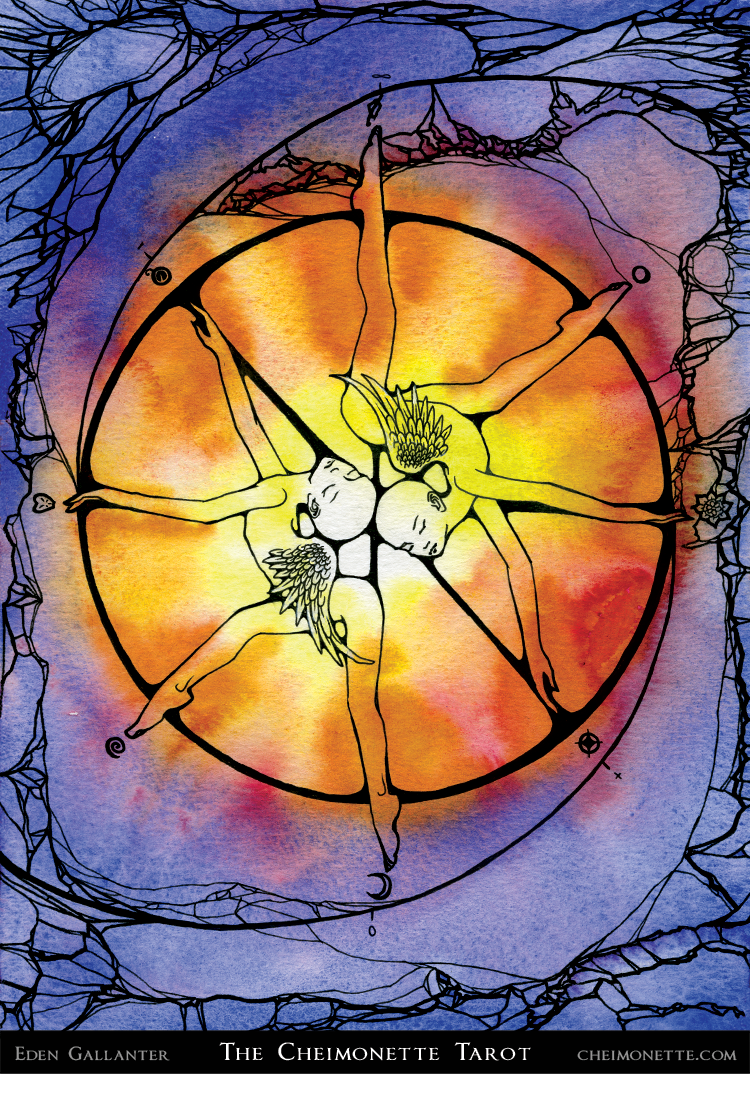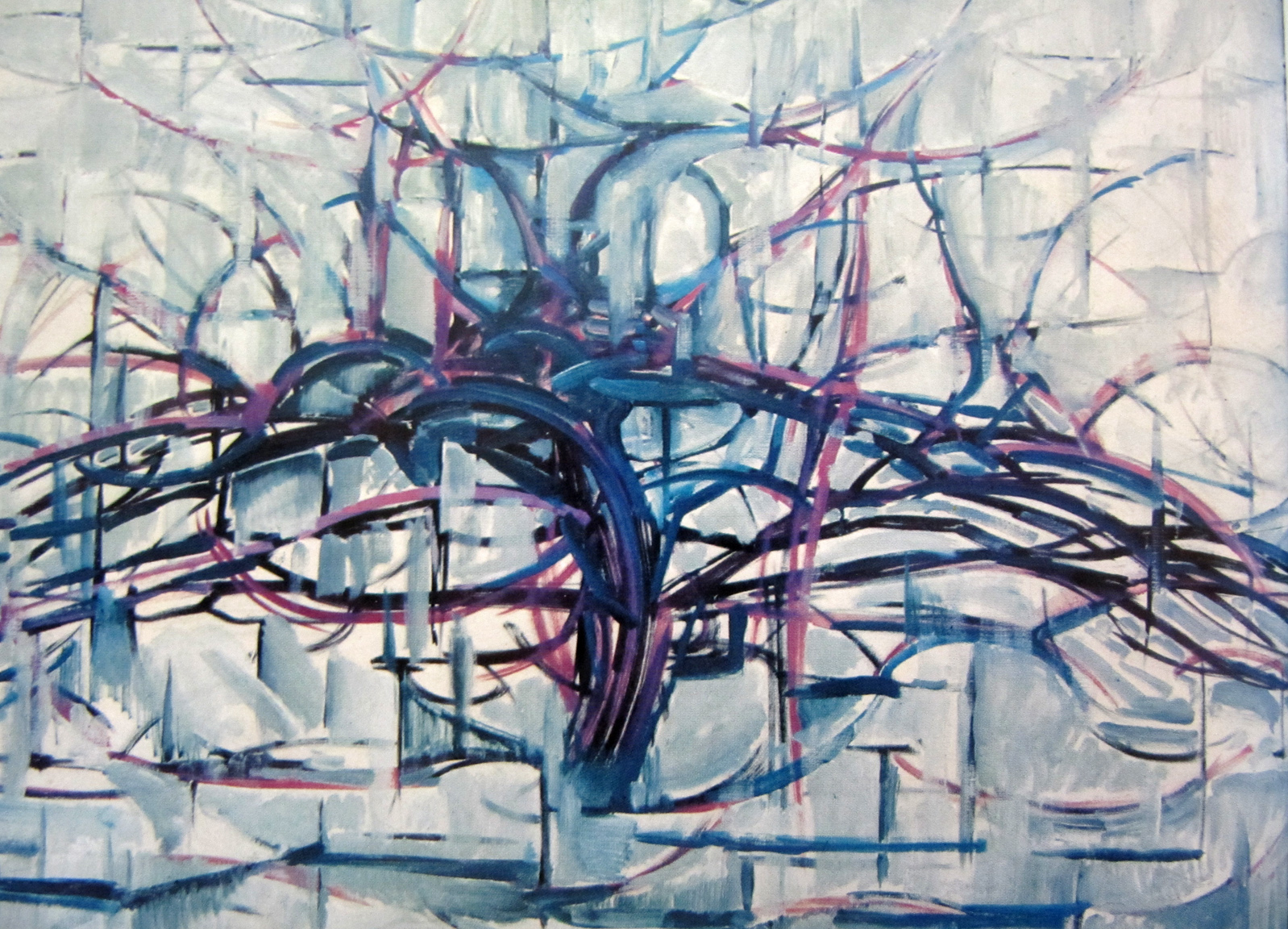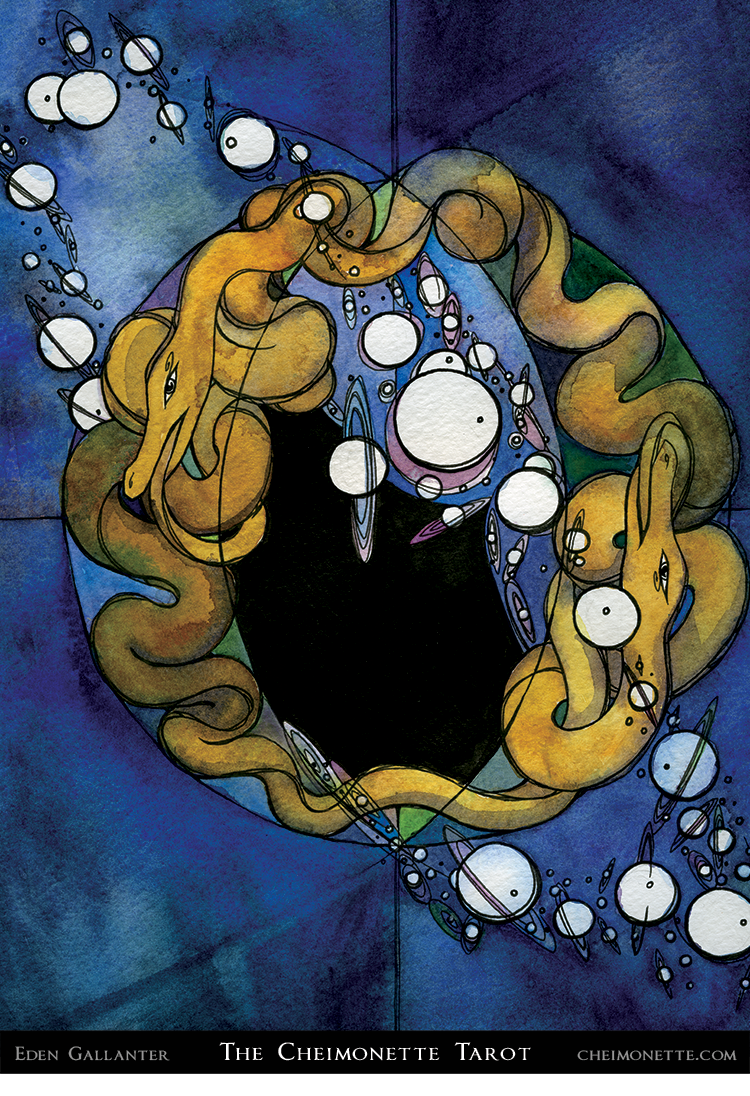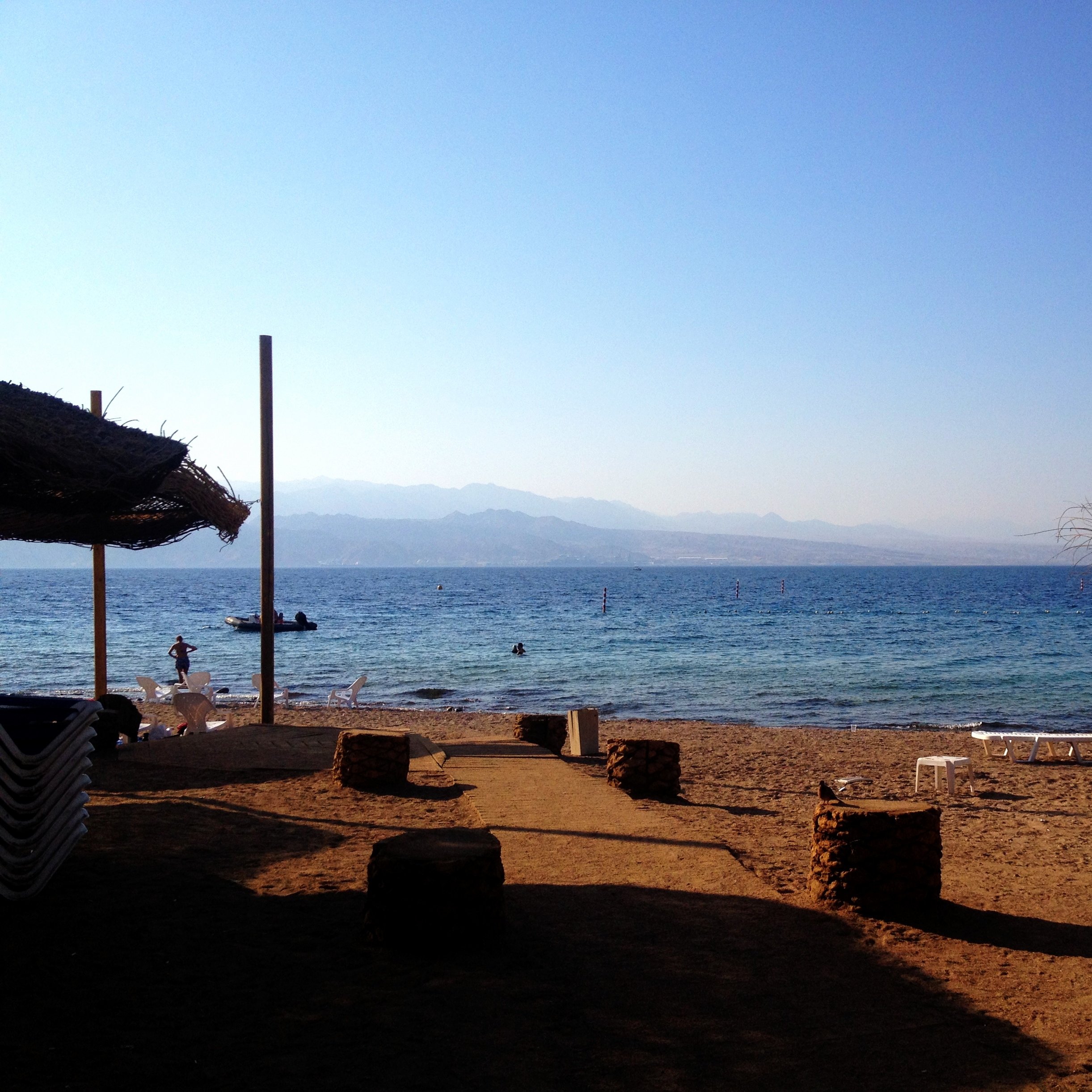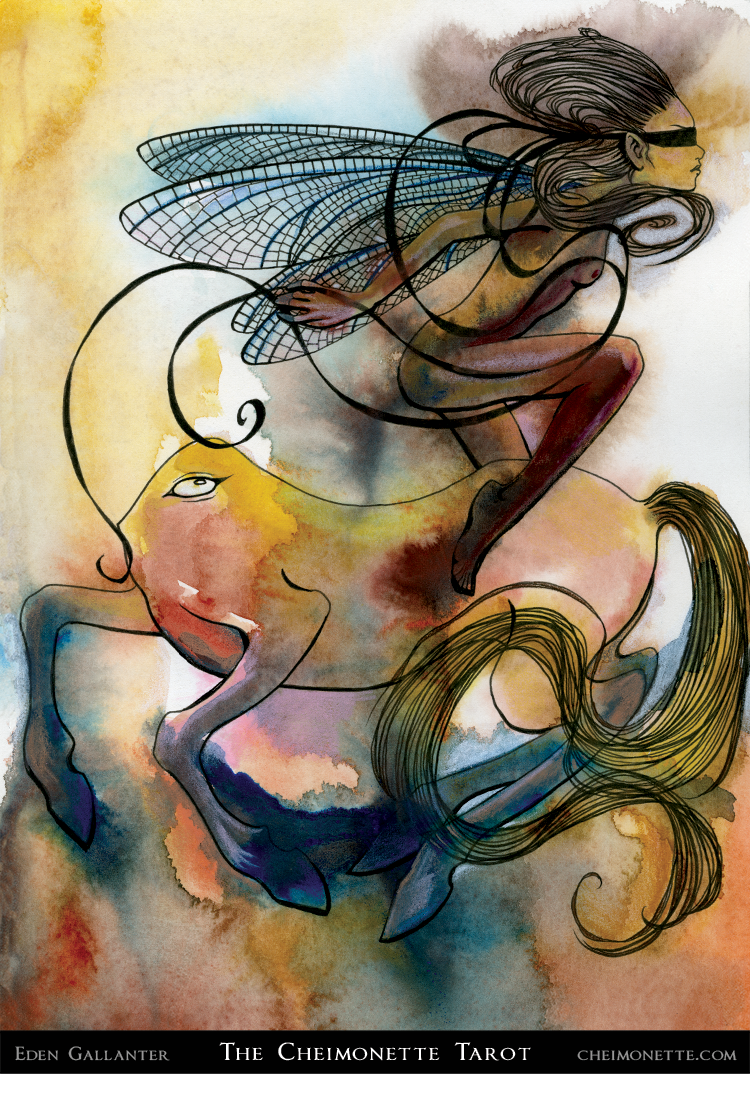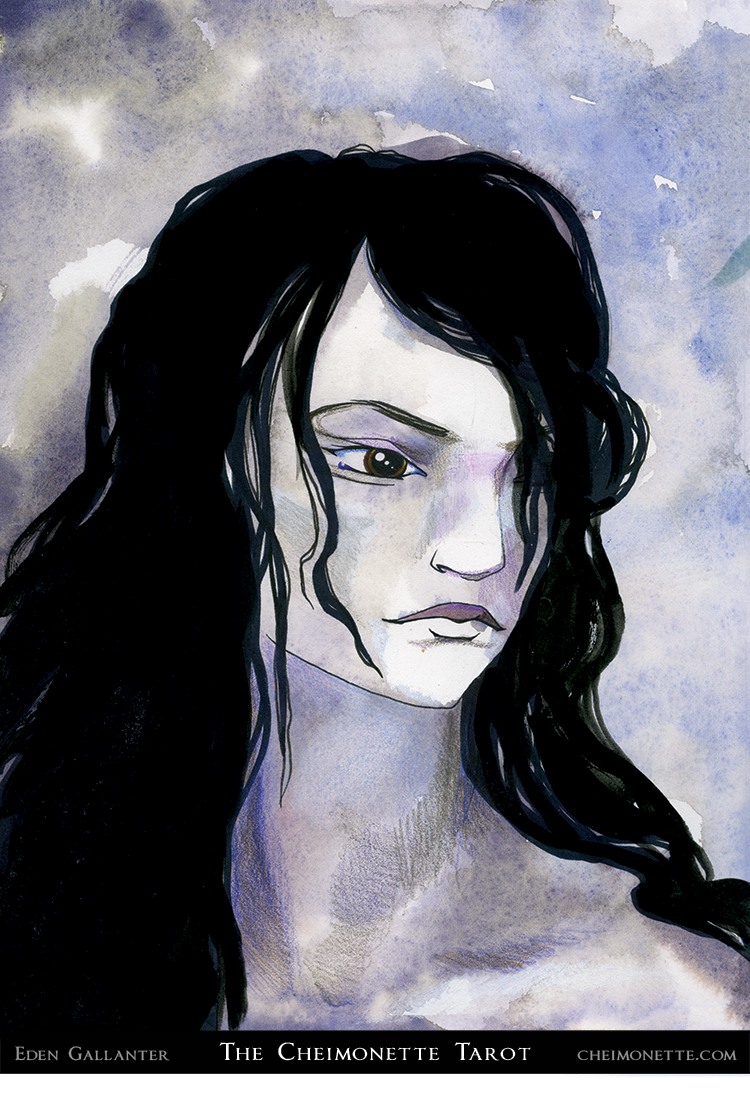The Artist's Legend
There are some metaphorical concepts at that lie at the core of many of the images than run through the Cheimonette Tarot. I saw René Magritte’s legend last week, at his special exhibit at the MOMA: a mirror, a bird, a ribbon in a bow, an apple, a bowler hat, a candle, all collected on one canvas, for the benefit of his beloved observer. So, here is mine, explained for my best beloved reader, and you can add your own, and we can make our own language together in this way:
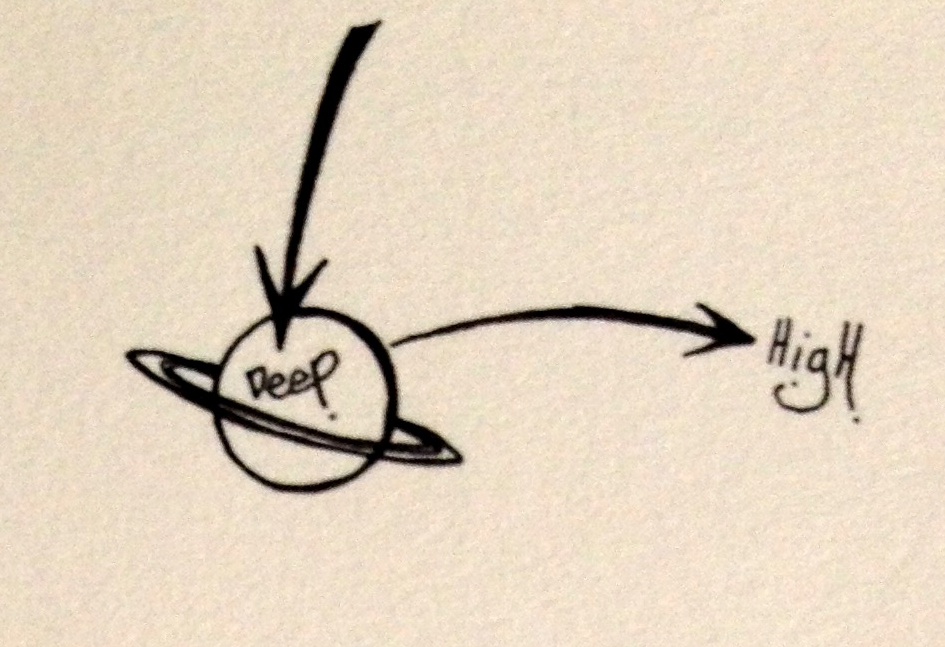 There are deep things and there are high things.
There are deep things and there are high things.
Deep things, being either underground, underwater, or buried burning within the core of some star or singularity, are slow-moving and silent. They take on the aspects (the surge current, the echoing crunch of seismic uplift and subduction, the blinding glow of irradiated atomic fusion) of their environments, and express their identity by a profoundly isolated and recursive imagination. In the way that the infinite field of postulated “collapsed” Calabi-Yau dimensional spaces take up no space and yet exist at every point in the universe, deep things each contain their own, disconnected little internal worlds.
High things have their own mass, their own energy and their own gravitational field. They do not take on the aspects of their environments because those environments have no size or shape of their own. Biological or tectonic forces keep the surface of the earth in a state of flux, and by the time we rise up into the stratosphere and beyond, the crowd of molecules and their motions have thinned out to a bare minimum.
Therefore there are only two directions in the whole world in which we may move: higher and deeper.
There are eight spokes in the tenth card in the major arcana, The Wheel. At the end of each spoke, where a limb of an angel terminates, there is an icon. This is the eight-letter pictogrammatical alphabet of the Cheimonette Tarot.
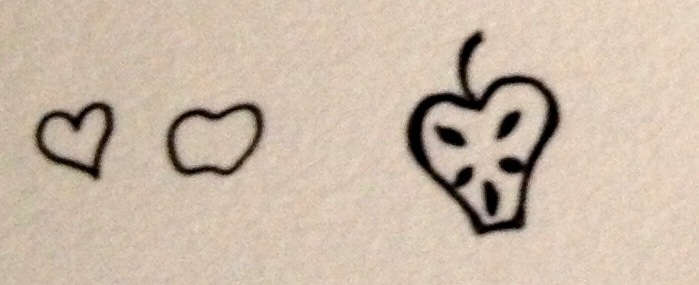 The Heart-Apple: the fruit of the tree of knowledge. This is the ability particular to human understanding, in which we are able to grasp our position in relation to the world, and exert ourselves to change it. (This tree is also known as the tree of death.)
The Heart-Apple: the fruit of the tree of knowledge. This is the ability particular to human understanding, in which we are able to grasp our position in relation to the world, and exert ourselves to change it. (This tree is also known as the tree of death.)
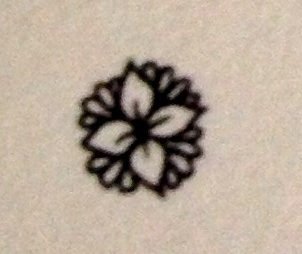 The Mandala-Flower: the fruit of the tree of life. This is the temporary escape from the demands of biological existence we find in profound feeling and creative understanding. This flower, when eaten, is also called freedom.
The Mandala-Flower: the fruit of the tree of life. This is the temporary escape from the demands of biological existence we find in profound feeling and creative understanding. This flower, when eaten, is also called freedom.
![]() The Crescent Moon: the sign of truth. Not only is truth not always beautiful, it is not always even righteous. It is simply the course of events along the inexorable passage of time.
The Crescent Moon: the sign of truth. Not only is truth not always beautiful, it is not always even righteous. It is simply the course of events along the inexorable passage of time.
![]() The God Sign: the mark of a divine concept or entity that cannot change or die. Really a rough zero and one, placed together like a phi.
The God Sign: the mark of a divine concept or entity that cannot change or die. Really a rough zero and one, placed together like a phi.
![]() The Real Eye: the symbol of life. Life is to be understood as the whole arc, from understanding and joy to suffering and intellectual darkness. Life as an opportunity, life as an adventure, life as a cruel trap, life as a responsibility: all of these.
The Real Eye: the symbol of life. Life is to be understood as the whole arc, from understanding and joy to suffering and intellectual darkness. Life as an opportunity, life as an adventure, life as a cruel trap, life as a responsibility: all of these.
![]()
The False Eye: the symbol of death. Death may also be understood to be eternal life (in which life is not life, but a changeless observation tower in which the corporeal body transforms into a bird and never returns to the mortal coil of existence and non-existence).
![]() The Bubble: the number zero. Like all bubbles, zero is a potential event and trajectory that has not yet happened: a star that has not yet exploded, an egg that has not yet hatched, an eye that has not yet opened.
The Bubble: the number zero. Like all bubbles, zero is a potential event and trajectory that has not yet happened: a star that has not yet exploded, an egg that has not yet hatched, an eye that has not yet opened.
![]() The Helix: the number one. A 1 curled up on itself, this number is both linked with numerical concepts such as zero and infinity, and also the beginning of all real numbers, which constitute the set of the visible universe. One is the integer who makes its debut into the world of flux, change, and chaos in which we find ourselves.
The Helix: the number one. A 1 curled up on itself, this number is both linked with numerical concepts such as zero and infinity, and also the beginning of all real numbers, which constitute the set of the visible universe. One is the integer who makes its debut into the world of flux, change, and chaos in which we find ourselves.
(Author’s Apology:
This world that surrounds us is in fact not self-made, but in our own subversive way we create another world out of differentiated labels (this is how language is made). We are nothing but helpless children in the midst of the lovely and fascinatingly unfamiliar light projections of our dreams, which we can of course never touch but which we mindlessly worship as the truth. What we are constantly forgetting is ourselves, holding out our palms sadly to one another and each of us wasting our desire on these things, which have been created by us, after all, and are not in themselves real and cannot compare to the indescribable beauty of their creators.)
